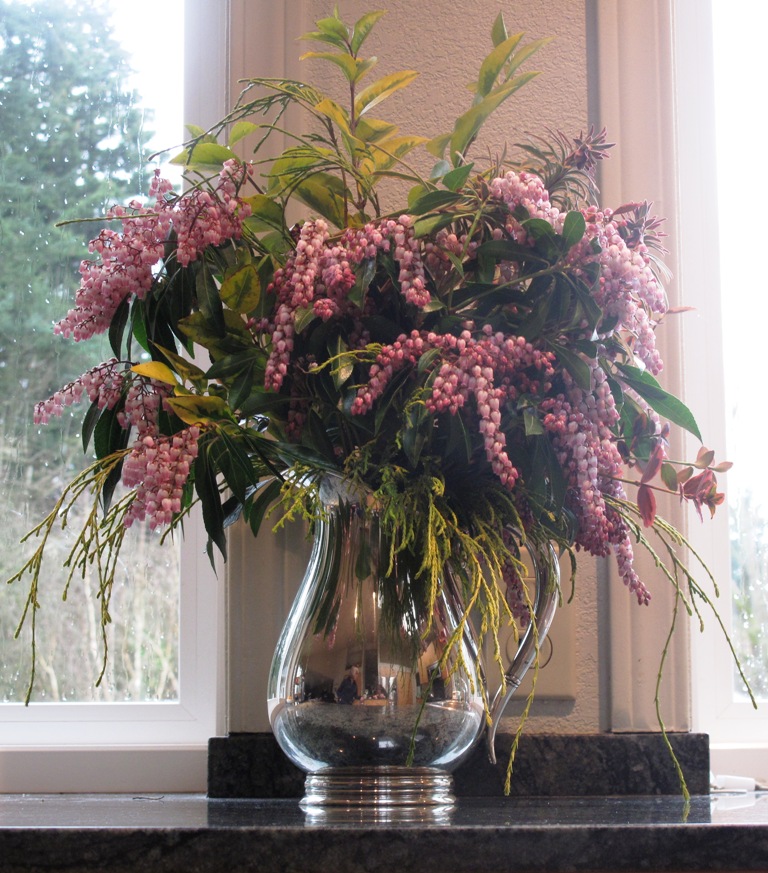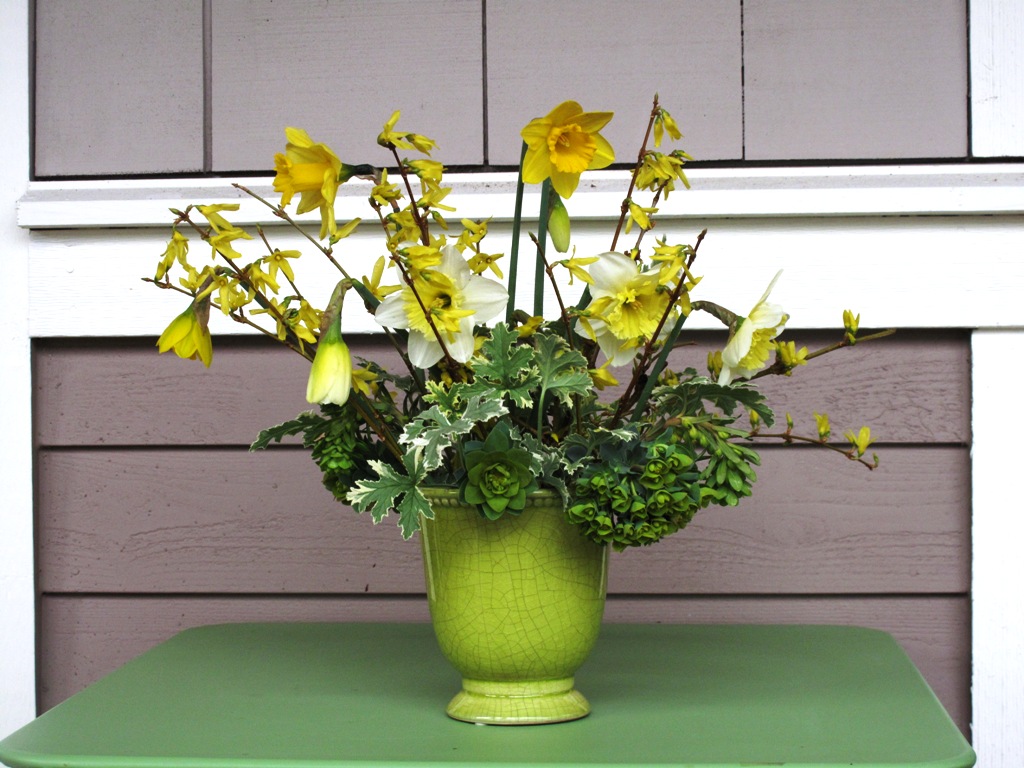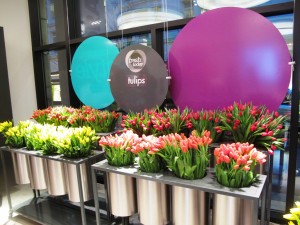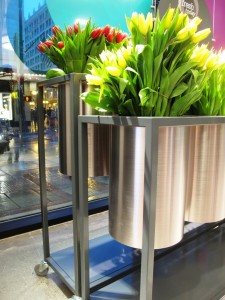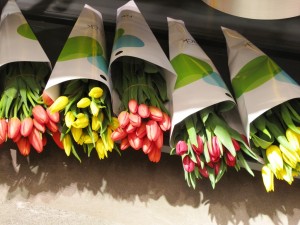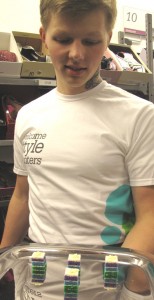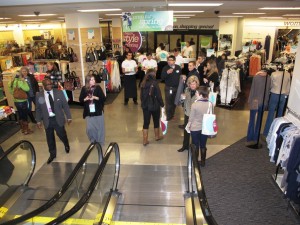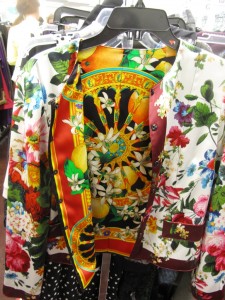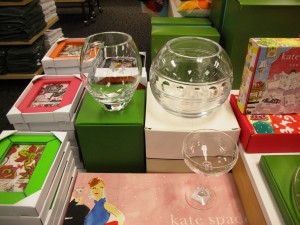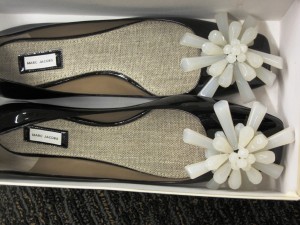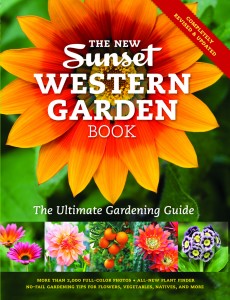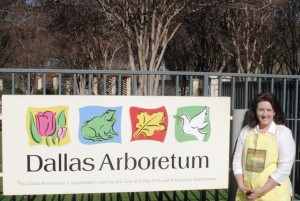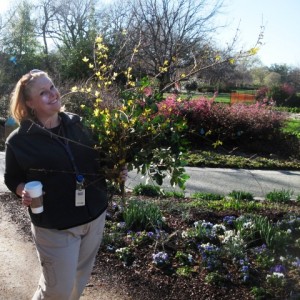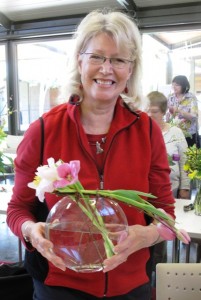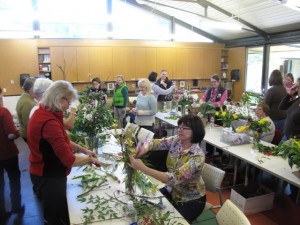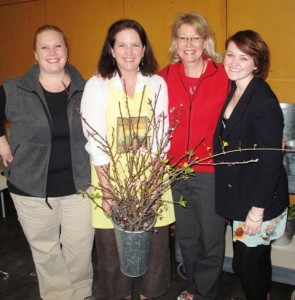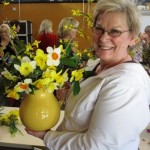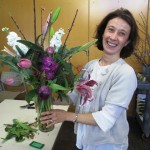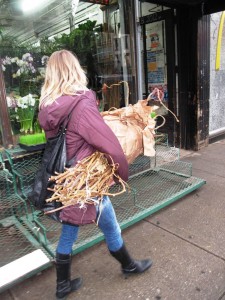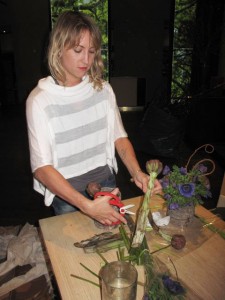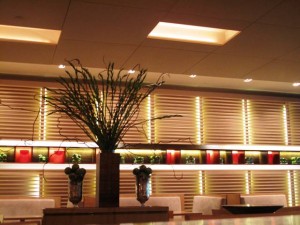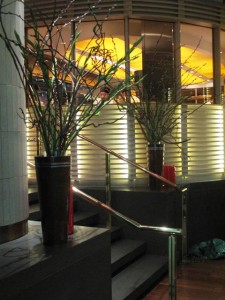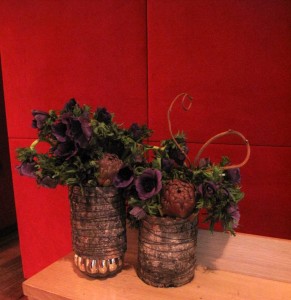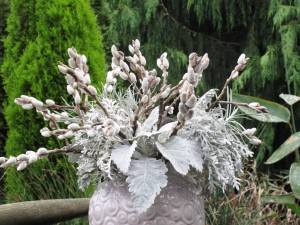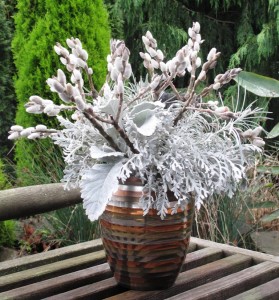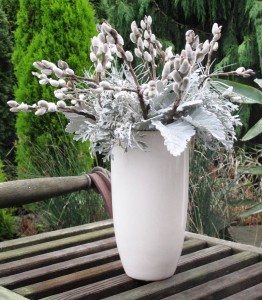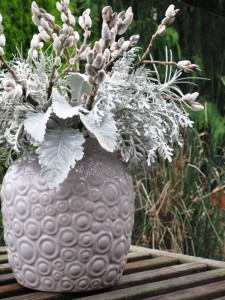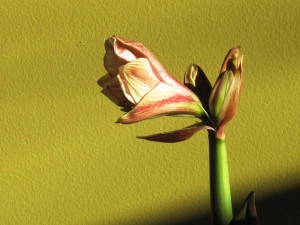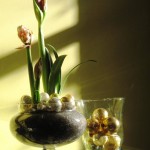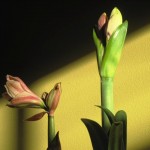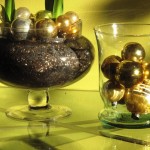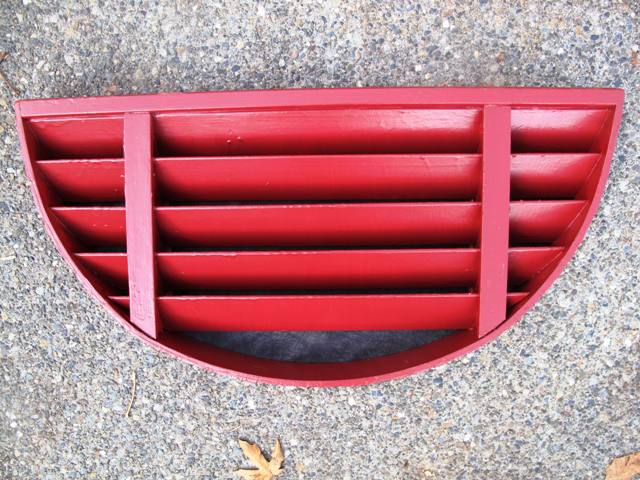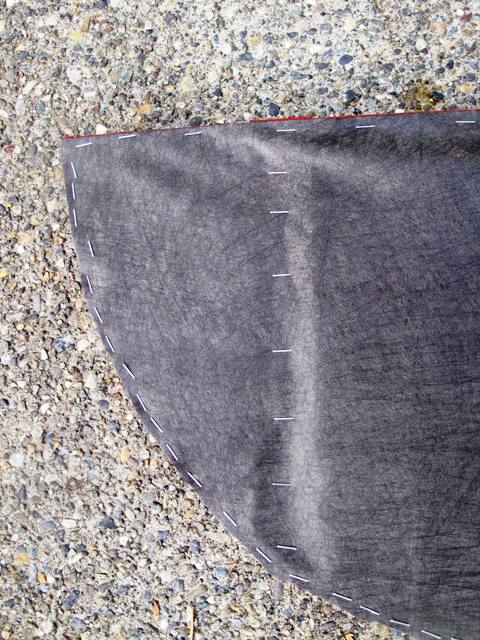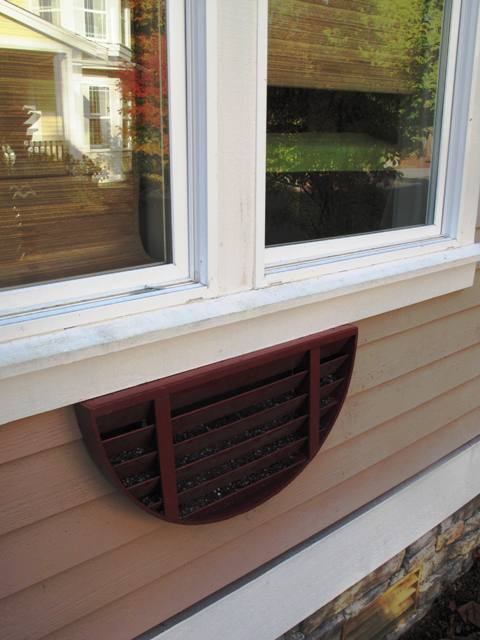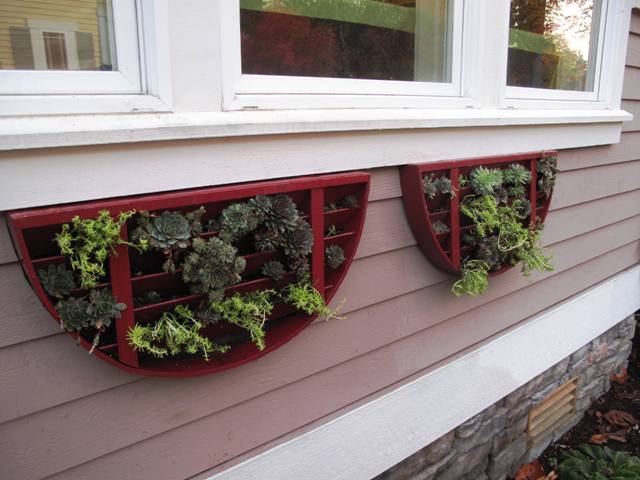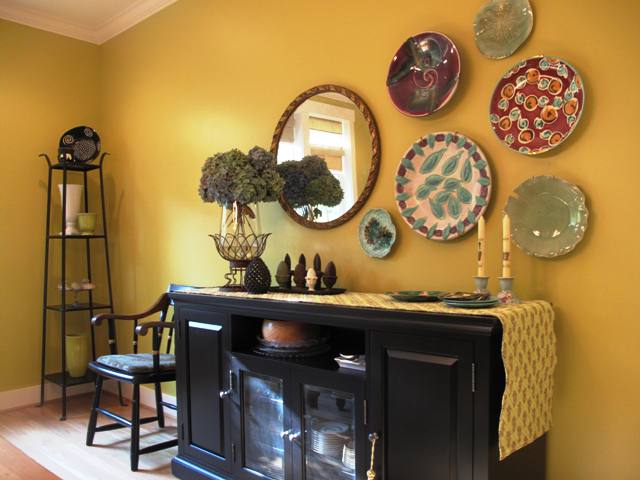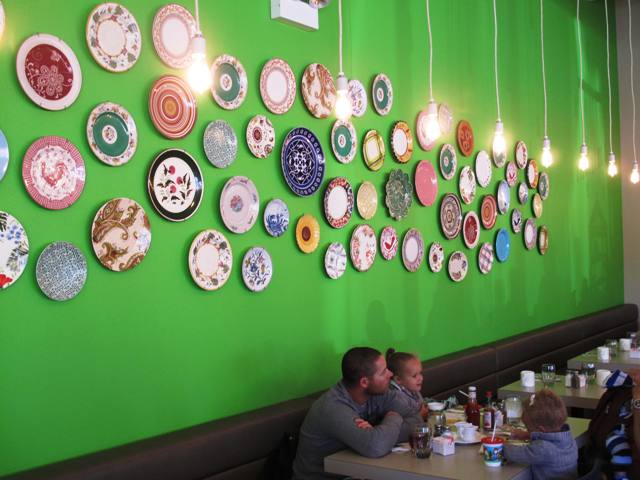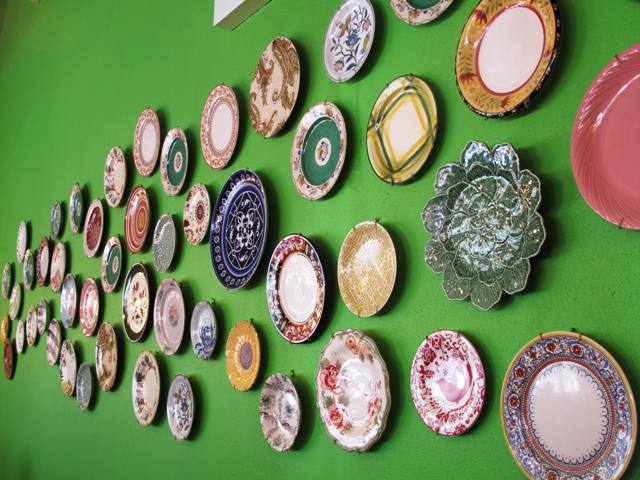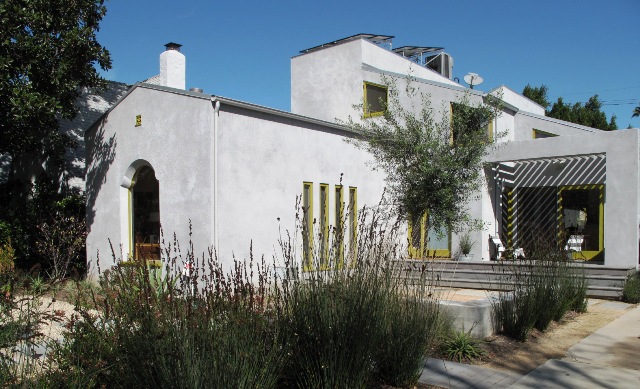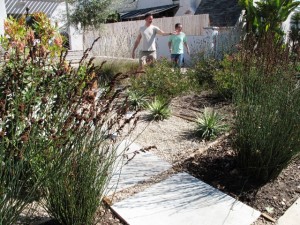March 20th is just around the corner – thankfully! And blooms are everywhere – under our noses, poking through the soil, erupting from branches, and filling our vases. Hurrah!
Here are some of the hints of spring that have come my way:
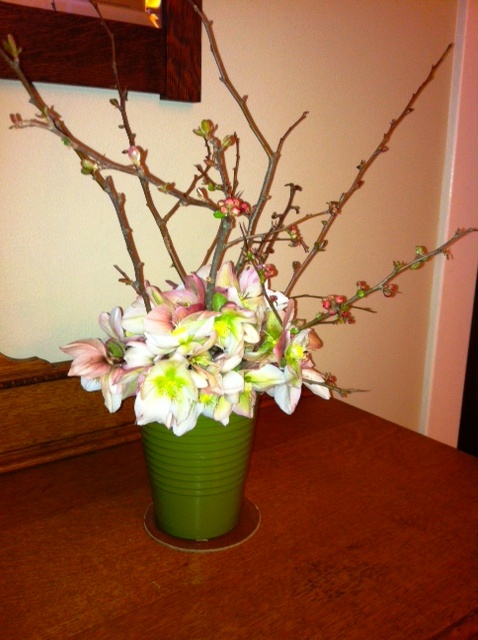
Kay's flowering quince branches and the delicate hellebores make for a stunning, early spring bouquet!
1. A DIY designer gets inspired by her own garden’s bounty. Earlier this week, an email with this charming photo appeared in my in-box from Kay Christie, who attended one of my demonstrations at the Northwest Flower & Garden Show last month. Thanks so much for sharing, Kay! And for the kind words. Keep designing!
I wanted to show you an arrangement I just made with cuttings from my garden. I really loved your demo at the flower and garden show. It gave me the idea for this. I also used chicken wire inside to hold the stems. Thanks do much for the inspirational talk.
2. A talented gardener clips goodies from her backyard for a special arrangement. Like Kay, Woodinville, Wash., gardener Peggy Shelley harvests beautiful floral ingredients from her landscape. I visited Peggy and her husband Al Shelley (also a gifted gardener) earlier this month to interview them for an upcoming Better Homes & Gardens article about their garden (the feature will appear in the August 2012 edition). There was a gorgeous bouquet on the kitchen counter and of course, I couldn’t take my eyes off of it. It included pink-flowering Japanese pieris, bi-colored pink-and-green euphorbia stems, golden thread branch cypress sprigs and lemon-yellow privet foliage. Peggy told me something quite inspiring – and I’m going to remind myself of her passion every time I head into my own garden:
The biggest satisfaction of my garden comes from making a bouquet and giving it to a friend.
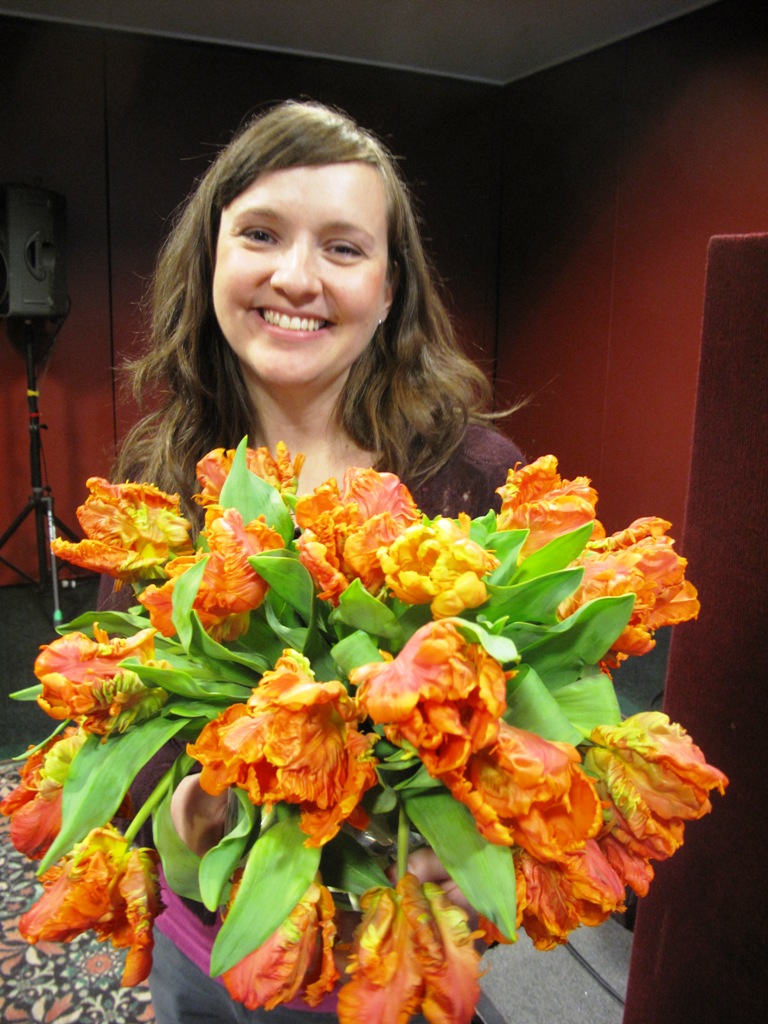
Lynn Fosbender of Pollen, an eco-friendly floral designer in Chicago, with her beautiful bouquet of local spring tulips.
3. Local flowers arrive just in time for a Chicago designer. Last Sunday, I was in Chicago to speak at the Chicago Flower & Garden Show (thanks, Bill Aldrich, for inviting me!). I called Lynn Fosbender, who owns Pollen, a sweet, ec0-conscious floral studio, and asked if she could bring a bouquet to my talk and also pass out her business cards. I wanted to showcase Lynn as a home-town resource for Chicago area floral customers, and let them know about her intentional design philosophy of using local flowers whenever possible. “I’d love to come,” she said. “But March 11th is still pretty early. I probably won’t be able to find local flowers from my sources.”
Then, to my delight, Lynn showed up with a vase of the most stunning vibrant orange-and-green parrot tulips I’d ever seen! “Spring has been mild here – and one of my local growers called me on Friday to let me know his tulips were ready to harvest,” Lynn said. What a wonderful treat. I wrote a post about Lynn when I first met her in 2012. Here’s a link to that story. I was so impressed with her vision for her business:
For several years I thought I would like to own a full-service flower shop that was eco-friendly. I knew if anyone should do it, it should be me.
4. See what my own garden yielded this week. I’ve been making a local and seasonally-inspired floral arrangement every single week for the past 20 weeks (since the first week of November). It’s part of my plan to create a book or blog called 52-Weeks-of-Local-Flowers. It’s been fun, creative, and very educational to discover what I can source from local growers, local farmers’ markets, and of course, my own backyard.
Yellow and green are the theme of this week! I used two types of euphorbia (dipping the cut stems in boiling water helped “seal” the ends so the milky white sap didn’t drain into the vase); two types of daffodils that the prior owners of our home planted on the parking strip along the street; lots of bright-yellow-flowering forsythia; and some lovely variegated foliage from the scented geranium plant I’ve been babysitting in my garage under the shop lights. Everything came together nicely in a small green-glazed vase and a vintage flower frog held the stems in place.
Today, strangely, it’s snowing in Seattle. I soaked my sweet pea seeds in water last night and I plan to plant them in flats in the garage today. I had wanted to weed and prep the beds, but really? I think I’ll wait and see if it warms up a bit! Happy Almost-Spring!









